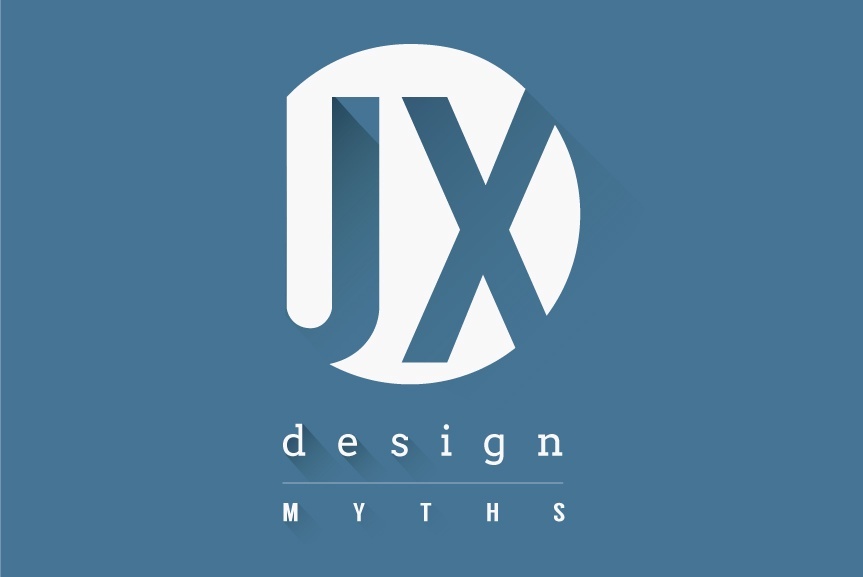Talking about web design services becomes a new trend. While not so many people are certain who a user is and what his or her experience is, hundreds would like to contribute into the discussion about proper approaches to it. Let’s take a look at 5 of the most widespread UX myths and their disproof.
1. Scrolling
MYTH (How many people view it): If I develop a long page that requires a lot of scrolling, user will read only the top of information. He or she will not scroll down. Who, actually, scrolls down?
TRUTH (How it really is): Maybe, that statement was a crux ten years ago, but now people are used to scrolling. Another thing is if they really like it, but actually this is the first action we perform at any website, even if it is without scrolling. Web developers design beautiful one-page websites where everything is based on rolling a page - down, to the right or left and so on. Scrolling is a method, and it’s up to you how to use it.
PROOF:
- Chartbeat: people pay 66% of their attention to the information outside the fond;
- MOVR: 50% of mobile users scroll after 10 seconds on a website, and 90% after 14;
- ClickTale: 76% of pages are scrolled by a user, and 22% are scrolled until the bottom;
- CX Partners: people scroll, if a page design encourages to do that;
- Jared Spool: despite their words about dislike of scrolling, people will have to perform it.
2. Aesthetics vs. Usability
MYTH (How many people view it): If a website looks well, it’s already usable. If a website is usable, it’s already aesthetic.
TRUTH (How it really is): Successful UX design is a combination of nice look and usability. You cannot neglect some component if you want to achieve a positive result.
PROOF:
- Stanford University: 46.6% of users underline the impact of visual performance on their experience with a website;
- Research “Do “Attractive Things Work Better”?”: nice things are more usable;
- Oliver Reichenstein, Steve Jobs: design is about performing, not only about aesthetics;
- “Emotional design” by Don Norman: good design is about functionality and aesthetics;
- Peter Bilak: design is about effective and ineffective communication with a user.
3. Rule of 7 (+/-2) options
MYTH (How many people view it): If I add more than 7 options to a website menu, it will be bad. Very, very bad.
TRUTH (How it really is): This prediction is based on George Miller’s theory, according to which an average person can keep no more than 7 items in a short-term memory. However, people do not have to memorize the buttons on your website - the aim is the functionality and attractiveness. The same is also related to the theory about three clicks to reach the information. Think about your user, not about the numbers.
PROOF:
- George Miller: theory is related to unidimensional stimuli and immediate recall and has nothing in common with the ability to comprehend a text;
- Human Factors International: top-level broad menus are more efficient;
- Jakob Nielsen: short-term memory is significant, but it does not have to limit a website;
- Edward Tufte: this conclusion is based on imaginary information: Miller did not limit the amount of information that has to be presented to the audience;
- ClickZ: 7 might be a magic number, but not scientifically proved.
4. Rationality
MYTH (How many people view it): People are rational. They come through my website and analyze the information in order to make meaningful choice.
TRUTH (How it really is): There for sure are some persons, who estimate everything and only after that act. However, mainly your user is led by emotions and subconscious. He or she even chooses the first option that captured the attention.
PROOF:
- Anchoring effect: people are inclined to rely on the first piece of information they trust (“anchor”);
- Power of free: people would prefer $10 Amazon certificate as a gift than buy $20 certificate for $7;
- Framing, illustrated by famous full in half or empty in half glass: the description or initial idea determines the choice of people;
- Placebo effect: if we believe in something, it helps us; if we trust a brand, we do not take care that there might be a better option;
- Thinking in relative terms: according to the experiment, people would not walk to another shop where they can save $7 from $455 item. But they will perform that action if the item costs $18.
5. Stock photos
MYTH (How many people view it): Nice stock images will heal my website. And actually it does not matter if they match the idea.
TRUTH (How it really is): Users love visual elements of a website, but they are frequently frustrated by typical stock photos and other graphic elements. Inappropriate images are the noise which they try to reduce.
PROOF:
- UIE: ornamental graphics provide more harm than advantage;
- Gerry McGovern: people distinguish marketing images and do not like them;
- Jakob Nielsen: people are blind to the majority of things that look like an ad;
- Laura Ruel from the University of Southern California: people are looking for a content, not decorations;
- Joshua Brewer: imagery that transmits the wrong message is the most dangerous element.
Do you still believe in myths? OK, wait for our next articles. There are still many myths to refute. However, the main aim of every website is to meet the requirements of users and facilitate their online experience. Therefore, think about people, not about predictions or numbers.

